–by Sharon Schroll
–by Sharon Schroll
–by Anthony Zukoff — Southwest Research and Extension Center
The recent freeze and a lack of flowering sorghum has ended adult sorghum midge activity in the area. Adult midges were observed on station grounds in Garden City starting the first week of July and were still present on late flowering panicles into the first week of September. As sorghum reaches maturity, it is easy to find evidence of midge activity even if you did not see adults when the fields were blooming. Simply look for flattened, blank zones on the heads. These seeds never developed because the maggots consumed them from the inside. A general recommendation for avoiding losses due to midge is to make sure the field blooms uniformly and before mid to late August. For comparison, in the Texas panhandle, growers are encouraged to have fields blooming no later than the first of August to avoid issues with sorghum midge. Beginning the last week of July, sorghum on the station this year bloomed over a long period of time, which allowed some general observations to be made regarding blooming time and midge damage once heads reached maturity. Plants that began blooming on July 25 were free of noticeable midge damage. Those that began blooming around August 5 experienced damage to the upper 1/5th of the panicles. A final location that bloomed very unevenly starting August 11 experienced significant losses with most panicles being almost completely blank (Figure 1). While midge damage is very easy to spot on varieties with red panicles, it might be more challenging to see on varieties with white panicles; however, damage will show up the same regardless of color (Figure 2). In addition to midge damage, headworm and bird damage were prevalent in the later blooming field but are easy to differentiate (Figure 3). If you have observed midge damage this season anywhere in the state, consider sending me a report including an estimate of acreage impacted and panicle damage. For additional information and control options, please refer to the Sorghum Insect Management Guide. https://bookstore.ksre.ksu.edu/pubs/MF742.PDF

Figure 1. From left to right: example of undamaged panicle from plants that began blooming July 25, slightly damaged panicles from plants that began blooming August 5 and severely damaged panicle from plants that began blooming August 11.
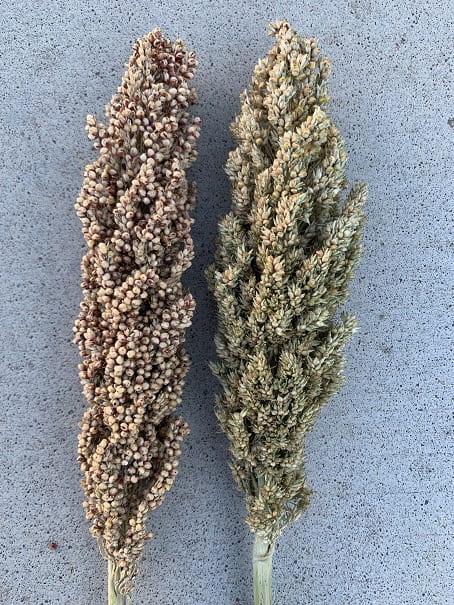
Figure 2. White panicle variety: undamaged head on the left severely damaged head on the right from a plant blooming the first week of September.

Figure 3. Various types of damage to sorghum heads. Left to right: undamaged head, severe sorghum midge damaged head, a head with heavy bird damage and on the right, a head exhibiting headworm damage.
–by Raymond Cloyd — Horticultural Entomology
Hummingbirds feed on nectar from flowers (Figure 1) because they cannot survive exclusively on the sugar water provided in hummingbird feeders (Figure 2). Consequently, hummingbirds feed on insects to obtain protein for muscle and feather development. Insects are an important source of amino acids, fats, fiber, salts, and other nutrients required for a balanced diet. Hummingbirds generally feed on insects that can be easily captured and swallowed, such as; ants, aphids, beetles, gnats, mosquitoes, and certain wasps (Figure 3). Hummingbirds will also eat insect larvae and eggs.

Figure. 1. Hummingbird Feeding On Nectar from Flower (Bird Watching HQ)
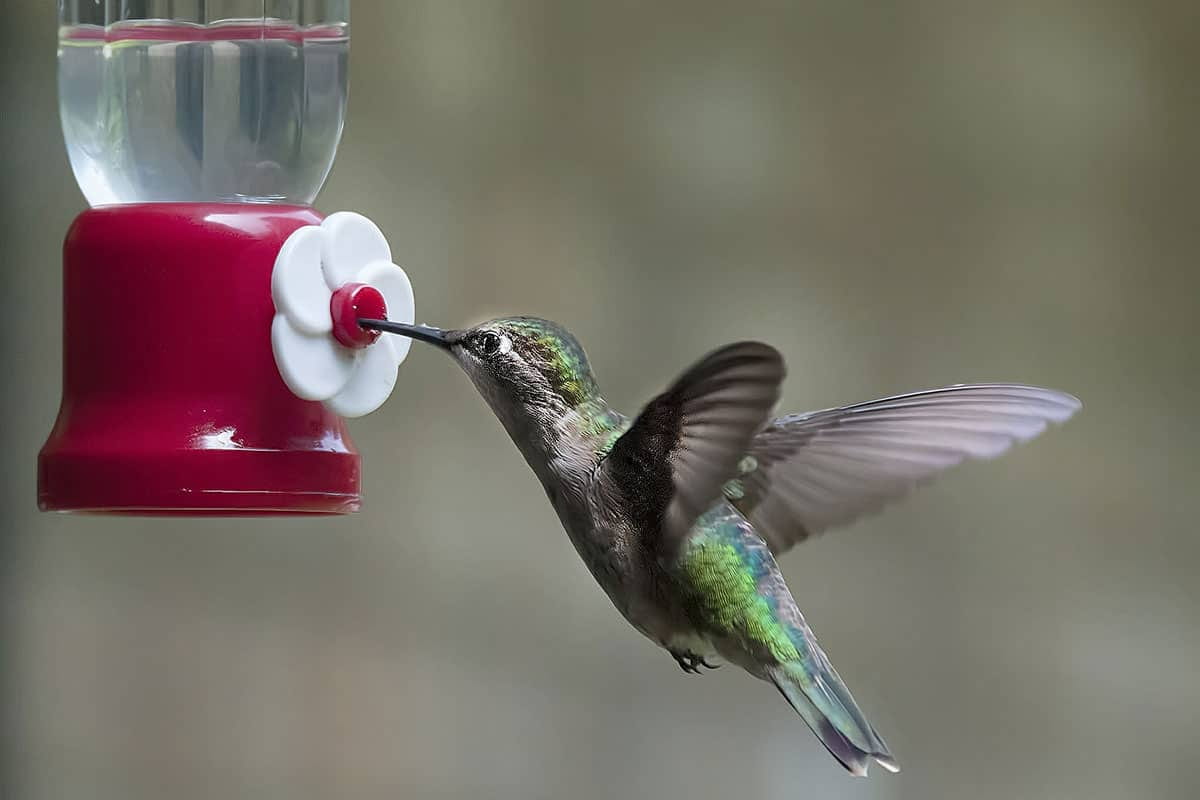
Figure. 2. Hummingbird Feeding On Sugar Water from Bird Feeder (Bird Feeder Hub)
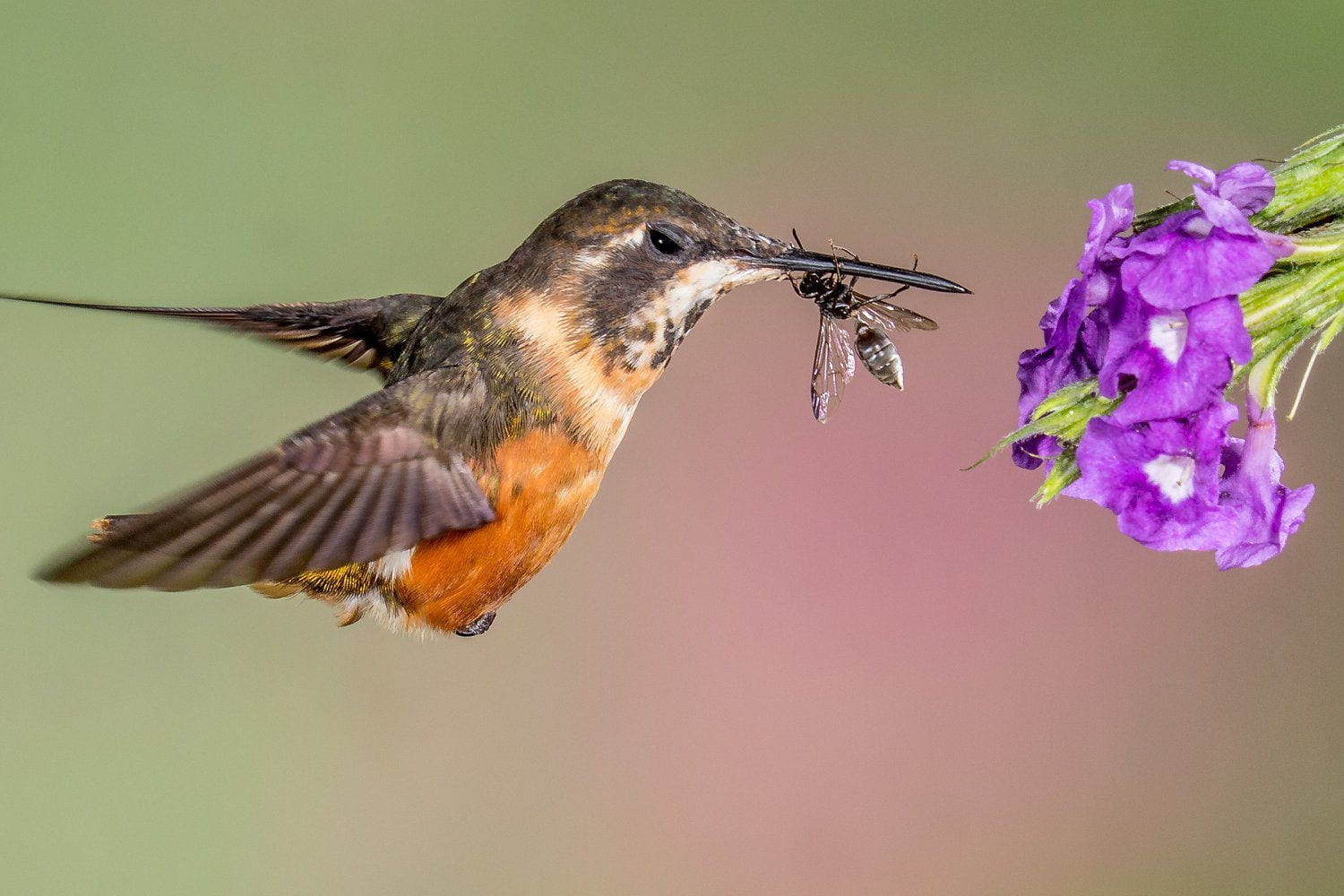
Figure. 3. Hummingbird Eating On Wasp (The Spruce)
Hummingbirds can eat between several hundred to a thousand insects in one day although the number of insects consumed varies depending on insect availability, insect type, and the dietary needs of hummingbirds.
Hummingbirds catch insects that are feeding on flowers, grab insects directly in the air, remove insects from spider webs, or snatch insects from the undersides of tree leaves. Hummingbirds cannot dismember their prey because of their body size and long, slender mouthparts (bills). Consequently, hummingbirds swallow insect’s whole.
–by Raymond Cloyd — Horticultural Entomology AND Jeff Whitworth — Field Crops
–by Jeff Whitworth — Field Crops
Have not seen, nor had any reports of, substantial armyworm or fall armyworm infestations since 28 September.
–by Jeff Whitworth — Field Crops
Sugarcane aphids are still quite active throughout the eastern 2/3rd’s of Kansas in fields that still have some green leaves. These aphids are continuing to migrate in and almost as soon as they land on green leaf tissue, they start producing the tiny nymphs (see fig 1-just produced nymphs with winged female that produced them). These aphids are still infesting sorghum but, so far, have not caused any problems throughout northcentral Kansas. It is getting late enough in the growing season that they should not have enough time to increase to the point where they will be a problem.

Figure 1: SCA nymphs and mother (photo by Cody Wyckoff)
Figure 2 shows an area outlined by a marker, on the underside of a sorghum leaf that was infested by a substantial (200+) colony of sugarcane aphids in early September but was subsequently eliminated by natural causes-no insecticides. This has been typical for the last 3 years, i.e. sugarcane aphids migrate into Kansas, starting in about mid-July and continue until late October, and establish small isolated colonies but with very few areas actually developing significant populations that require treatment.

Figure 2: Underside of leaf previously infested by SCA colony (photo by Cody Wyckoff)
–by Raymond Cloyd, Horticultural Entomology
Are you seeing flying insects that resemble hummingbirds visiting various flowers in the garden (Figure 1)? Well, these are moths of the white-lined sphinx, Hyles lineata, which is commonly observed during this time of year. The moths are active day and night feeding on flower nectar using their elongated, tubular mouthparts while hovering like a hummingbird. They feed on a wide variety of flowering plants including cardinal flower, columbine, evening primrose, honeysuckle, penstemon, petunia, and phlox.

Figure 1. White-Lined Sphinx Moth Feeding On Nectar from Flower (Raymond Cloyd, KSU)
The adult body and front wings are green-brown and there are six white stripes on the thorax (middle section of the insect body). The main veins of the front wings are white. There is a distinct light-brown or gray-brown band that extends across each front wing from the tip to the base. The hind wings are dark-brown and there is a broad pink band extending across each wing. There is also a narrow, pink band along the margin (Figure 2).
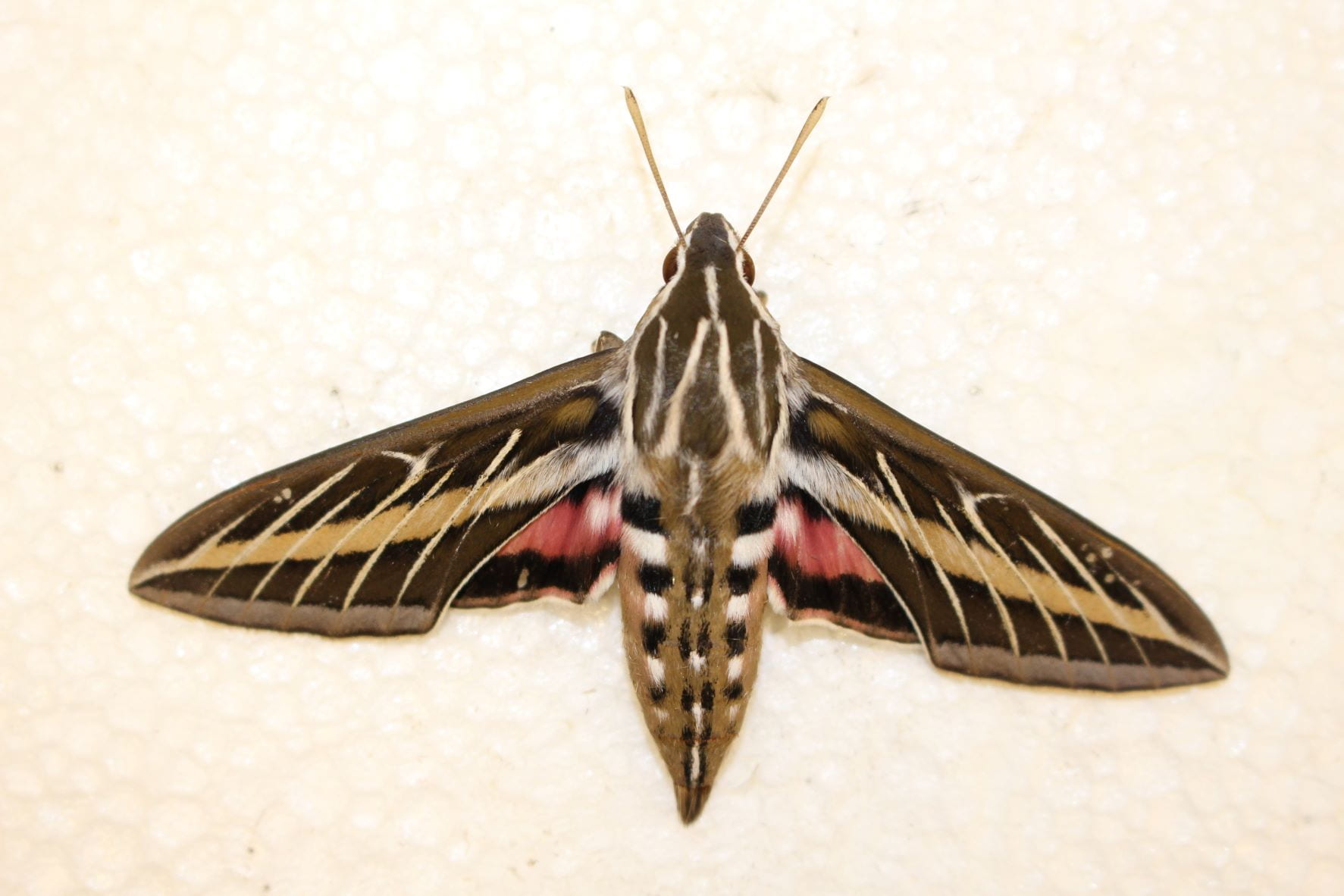
Figure 2. White-Lined Sphinx Moth (Raymond Cloyd, KSU)
In spring, adult females lay hundreds of eggs on plant leaves. Caterpillars (larvae) emerge (eclose) from the eggs. Mature (older) caterpillars are 3.5 inches (8.9 cm) long.
Caterpillars vary in color but are commonly light green with black stripes extending the length of the body, as well as yellow and orange spots. There is a pointed horn at the end of the body (Figures 3 and 4). Caterpillars feed on weeds including purslane and four o’ clocks. They eventually burrow into the soil and pupate.

Figure 3. White-Lined Sphinx Caterpillar (Raymond Cloyd, KSU)

Figure 4. White-Lined Caterpillar (Raymond Cloyd, KSU)
–by Sharon Schroll
–by Jeff Whitworth — Field Crops
“Worms” (larvae of armyworms, fall armyworms, etc.) are still causing considerable concern, at least throughout the eastern 2/3rd’s of Kansas. They have slowed a little over the last couple of weeks, as many have been pupating, mating, egg laying, etc. Therefore, if you have experienced significant “worm” activity in the last month or two, it will be a great time to start monitoring those vulnerable areas, i.e. seeding wheat, brome, alfalfa, etc. to detect any new “worm” infestations while the worms are small before they can do much feeding. The picture on the left is a brome field in Saline County that had a significant infestation of armyworms and was sprayed approximately 2 weeks prior to this picture and there was no rain between spraying and the date of this picture. The picture on the right is a patch of that same pasture that could not be sprayed.
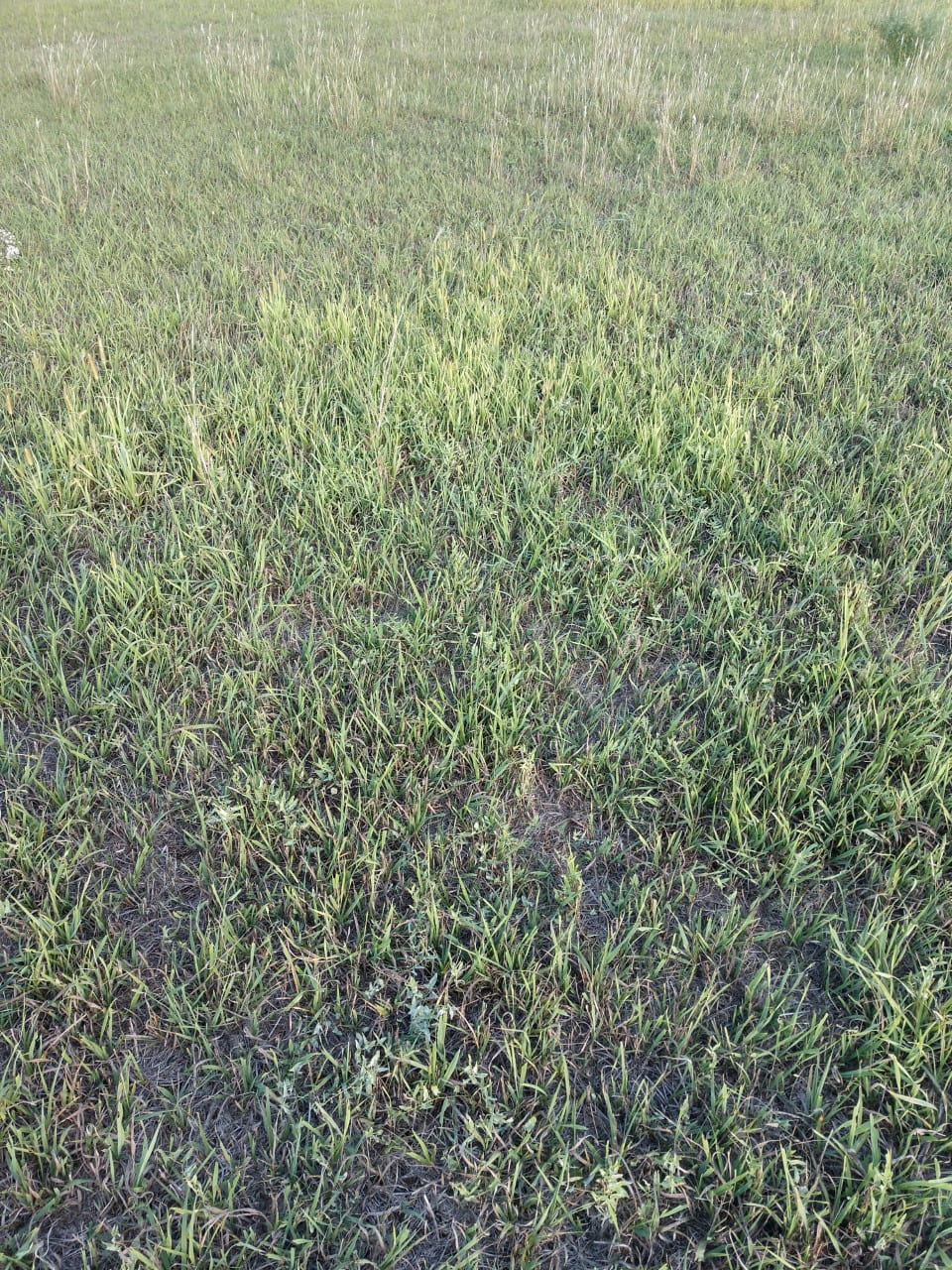
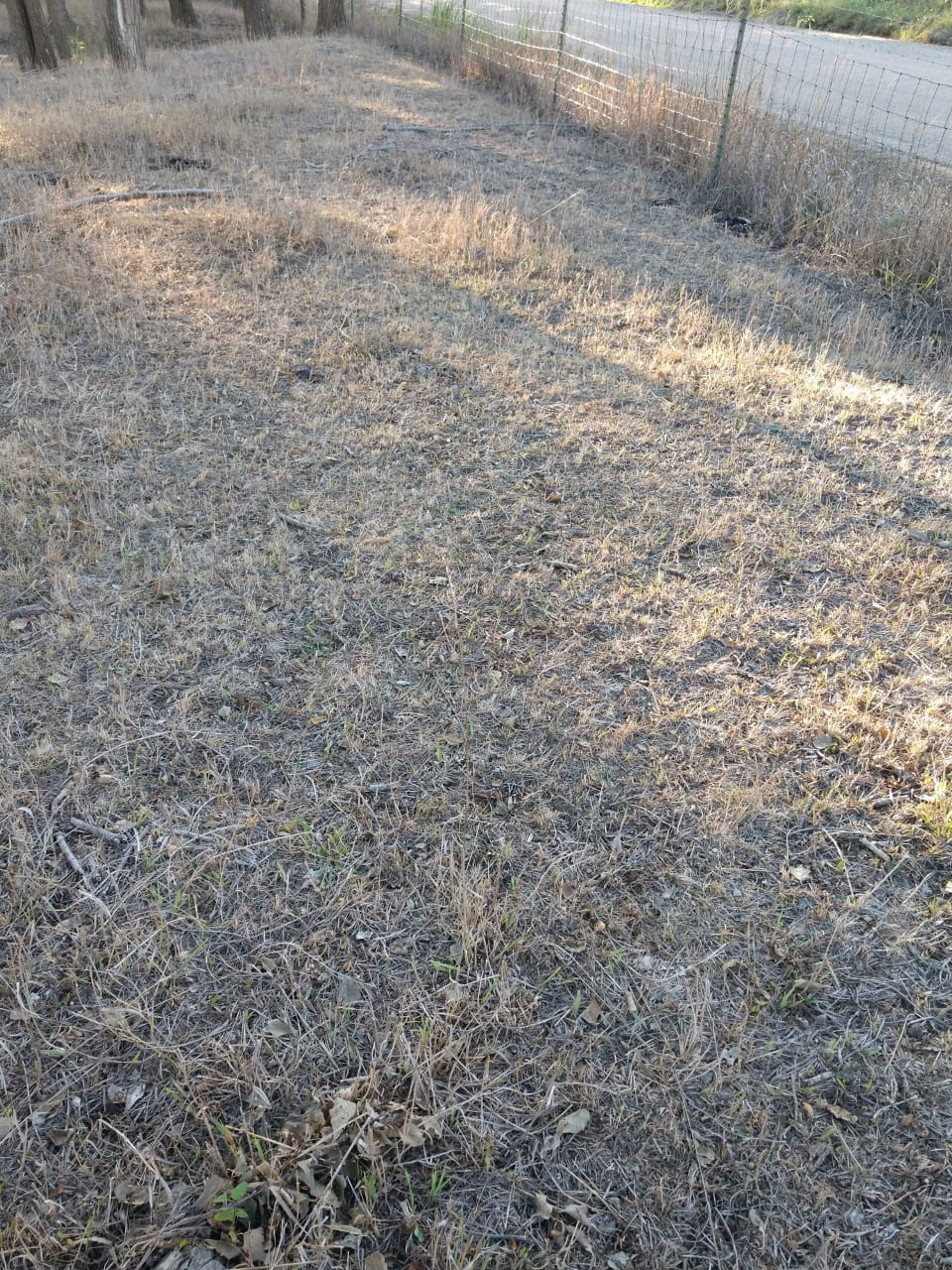
(Pictures provided by a rancher in Saline Co.)
Also, we have conducted 2 separate insecticide efficacy trials against armyworms, one in brome and one in volunteer wheat. The raw data from the trial in brome are presented here. Analyzed results of both trials will be available on the KSU Entomology website, hopefully, in the near future.
| Total worms/ft2/4 Reps | |||
| Treatment | Rate | 19 Sept (7 dat) | 26 Sept (14 dat) |
| Fastac CS | 2.4 fl. oz/a | 0 | 1 |
| Besiege XL | 8.0 fl. oz/a | 0 | 2 |
| Stallion | 6.0 fl. oz/a | 0 | 2 |
| Grizzly Z | 2.5 fl. oz/a | 0 | 0 |
| Lorsban 4E | 1.5 pint/a | 3 | 3 |
| Check (control) | – | 25 | 26 |
| Check (control) | – | 18 | 20 |